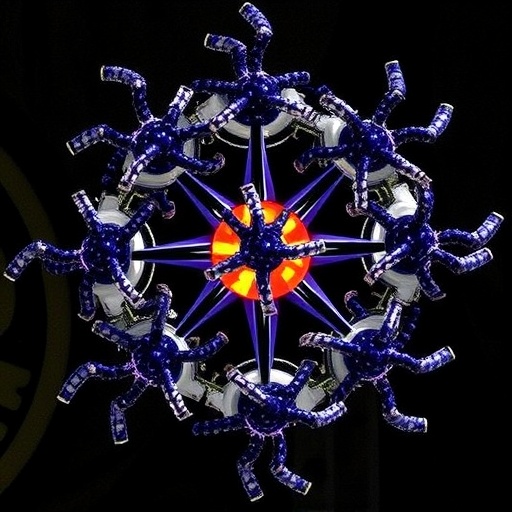
In a groundbreaking study poised to reshape our understanding of bacterial genome regulation, researchers have unveiled an intricate and unconventional landscape of G-quadruplex (G4) structures within Mycobacterium tuberculosis (Mtb), particularly in response to oxidative stress. This revelation, stemming from the application of an advanced epigenomic profiling technique known as CUT&Tag (Cleavage Under Targets and Tagmentation), highlights a sophisticated DNA secondary structure dynamic previously underappreciated in prokaryotic pathogens and opens new avenues for therapeutic targeting against one of humanity’s deadliest pathogens.
G-quadruplexes, four-stranded DNA or RNA structures enriched in guanine bases, have long been recognized in eukaryotic genomes for their regulatory roles in transcription, replication, and genome stability. However, their presence and functional significance in bacterial pathogens, especially in the complex intracellular bacterium Mtb, have remained elusive. The intricate architecture of the Mtb genome, coupled with its notorious ability to survive hostile environments within host macrophages, presents a formidable challenge to traditional genomic analyses. The current study bridges this knowledge gap by employing CUT&Tag, a technique offering unprecedented resolution and specificity in mapping protein-DNA interactions and DNA secondary structures in situ.
In their investigation, the team subjected Mtb cultures to oxidative stress conditions mimicking the hostile environment encountered during macrophage infection. Oxidative stress, a result of reactive oxygen species generated by host immune responses, imposes a substantial threat to bacterial survival and DNA integrity. The researchers hypothesized that the bacterial genome might harbor dynamic structural adaptations, such as changes in G4 configurations, to contend with such stress. Using a G4-specific antibody in CUT&Tag assays, they profiled the genome-wide distribution of G-quadruplexes under both basal and oxidative stress conditions.
.adsslot_w9u4FDBTUN{width:728px !important;height:90px !important;}
@media(max-width:1199px){ .adsslot_w9u4FDBTUN{width:468px !important;height:60px !important;}
}
@media(max-width:767px){ .adsslot_w9u4FDBTUN{width:320px !important;height:50px !important;}
}
ADVERTISEMENT
The results were illuminating. Mtb showed an unexpectedly rich landscape of G4 structures dispersed throughout its genome, but notably, the patterns shifted dramatically upon oxidative stress induction. Certain regions accumulated stabilized G-quadruplexes, suggesting that G4 formation is a responsive mechanism to oxidative DNA damage or a modulator of gene expression under stress. These stress-induced G4 foci were found in regulatory regions, including promoters of genes involved in DNA repair, stress response pathways, and essential virulence factors, underscoring the potential regulatory role of G4 structures in Mtb physiology and pathogenicity.
This dynamic adaptation challenges the classical view of bacterial genome rigidity and reveals an additional layer of gene regulation mediated by DNA secondary structure plasticity. Particularly intriguing was the discovery that non-canonical and atypical G4 motifs proliferated under oxidative stress, divergent from the well-characterized eukaryotic G4 consensus sequences. Such unconventional G4s could be uniquely tailored for bacterial survival requirements, opening the door for novel selective drug targeting that spares human host cells.
Importantly, the study’s utilization of CUT&Tag represented a technical leap forward. Traditional chromatin immunoprecipitation (ChIP)-based methods often fail to resolve secondary DNA structures due to their reliance on crosslinking and sonication steps that can disrupt fragile DNA conformations. CUT&Tag circumvents these limitations by enabling in situ tagmentation of native chromatin-bound molecules with minimal manipulation, preserving the delicate G4 architecture. The method’s heightened sensitivity and reduced background noise permitted a precise mapping of G4 elements even within Mtb’s GC-rich and complex genomic landscape.
Beyond the basic discovery, the findings have profound implications for tuberculosis (TB) treatment and drug development. Mtb’s notorious resilience against antibiotics is partly attributed to its ability to alter gene expression and survive oxidative bursts from immune cells. Targeting G-quadruplexes or their associated binding proteins could abolish this adaptive mechanism, sensitizing bacteria to both host immunity and pharmacological agents. Molecules that can selectively stabilize or destabilize bacterial G4s may emerge as adjunct therapies, enhancing the efficacy of existing antitubercular drugs.
Moreover, the study serves as a template for exploring DNA secondary structures in other prokaryotic systems. The adaptability of CUT&Tag for mapping G4 landscapes extends beyond Mtb, potentially illuminating bacterial stress responses in a wide range of pathogens. This could unravel conserved or unique genomic regulatory mechanisms, transforming our molecular understanding of infection biology and microbial survival.
Intriguingly, the authors also observed that oxidative stress not only modified the quantity but also the quality of G4 structures, inducing complex topologies and possibly promoting the formation of multimeric quadruplex assemblies. These higher-order conformations could influence genomic architecture and DNA-protein interactions more dramatically than simple G4 motifs. Such depth of structural complexity was previously only hypothesized in eukaryotic systems, suggesting a convergent evolution of DNA regulatory strategies between distant domains of life.
Equally significant was the identification of G4s overlapping with regions bound by nucleoid-associated proteins (NAPs) in Mtb. NAPs organize bacterial chromosomes and regulate gene expression, and their interplay with G4s hints at a sophisticated crosstalk between DNA secondary structure and protein-mediated chromosomal organization. This multilayered regulatory network could be crucial for rapid adaptation under fluctuating environmental stresses, including those presenting inside host cells.
From a methodological perspective, the study sets a new standard for interrogating DNA secondary structures in bacteria. The authors carefully optimized antibody specificity, reaction conditions, and sequencing pipelines to confidently distinguish bona fide G4s from potential artifacts. Their approach paves the way for integrating genome-wide structural mapping with transcriptomic and proteomic analyses to paint a comprehensive picture of stress-induced bacterial adaptation.
Further, the investigation sheds light on the evolutionary pressures shaping bacterial genome architecture. The capacity to form unconventional G4 structures suggests an intrinsic genomic plasticity that may confer advantages in maintaining genome integrity, regulating mutagenesis, or fine-tuning gene expression under oxidative duress. These findings raise provocative questions regarding the evolutionary origins and conservation of G4 motifs across diverse bacterial taxa and their role in pathogen evolution and virulence.
One of the most exciting prospects arising from this research is the translational potential. Drugs modulating G-quadruplex stability have been explored in cancer therapy, yet few efforts have targeted bacterial G4s explicitly. This study provides a rational framework to design and screen small molecules or peptides that recognize Mtb-specific G4 topologies, offering a novel class of antimicrobial agents with precisely targeted mechanisms that minimize host toxicity.
The research also invites a reevaluation of how host-pathogen interactions influence bacterial genome structure. Oxidative stress is a key battleground in the immune response to TB infection, and the discovery that this stress directly modulates bacterial DNA conformation unveils a hidden layer of molecular warfare. Understanding these dynamics could inform the development of immunomodulatory interventions or diagnostic tools based on G4 biomarker detection.
Additionally, the findings prompt a rethinking of bacterial epigenetics. While classical epigenetic modifications in bacteria, such as DNA methylation, have been intensively studied, the role of DNA secondary structures as dynamic epigenetic marks is an emerging paradigm. This study contributes compelling evidence supporting G4s as functional epigenetic-like elements modulating bacterial gene regulation in real-time environmental contexts.
In conclusion, this landmark study uncovers a previously uncharted G-quadruplex landscape within Mycobacterium tuberculosis that is responsive to oxidative stress and intimately connected to gene regulation and genome stability. The employment of CUT&Tag technology offers unparalleled insight into the dynamic structural adaptations bacteria harness to survive hostile conditions. These insights significantly broaden our understanding of bacterial genome complexity, pushing the frontier of infectious disease biology and opening transformative avenues for therapeutic innovation against tuberculosis.
Subject of Research: DNA secondary structures, specifically G-quadruplex formations, in Mycobacterium tuberculosis under oxidative stress conditions.
Article Title: CUT&Tag reveals unconventional G-quadruplex landscape in Mycobacterium tuberculosis in response to oxidative stress.
Article References:
Maurizio, I., Ruggiero, E., Zanin, I. et al. CUT&Tag reveals unconventional G-quadruplex landscape in Mycobacterium tuberculosis in response to oxidative stress. Nat Commun 16, 7253 (2025). https://doi.org/10.1038/s41467-025-62485-4
Image Credits: AI Generated
Tags: advanced genomic analysis methodsbacterial genome regulationCUT&Tag epigenomic profiling techniqueDNA structure dynamics in pathogensG-quadruplex structures in Mycobacterium tuberculosisinnovative approaches to studying bacterial pathogensmacrophage infection dynamicsMtb genome architectureoxidative stress response in bacteriaprokaryotic DNA secondary structuresrole of guanine-rich sequences in bacteriatherapeutic targets for tuberculosis





